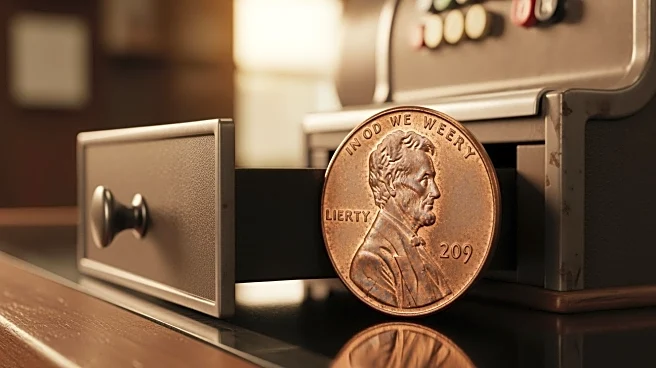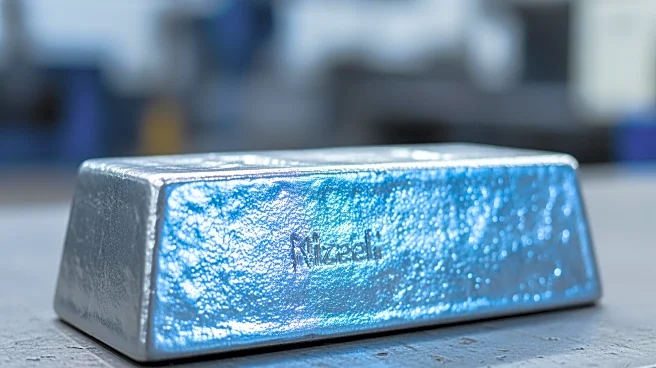What's Happening?
The U.S. Mint has officially stopped producing pennies as of November 12, following a directive from President Trump. The decision was made because the cost of producing the penny now exceeds its face value. This move marks the end of over two centuries
of penny production in the United States. Despite the halt in production, existing pennies will remain in circulation and continue to be accepted by retailers, banks, and coin-counting machines. The transition to a penny-free economy is expected to be gradual, with the coins slowly disappearing from circulation as they are lost, damaged, or deposited. Retailers have varied responses, with some opting to round cash transactions to the nearest nickel, while others continue to accept exact change.
Why It's Important?
The cessation of penny production is significant as it reflects broader economic considerations and the evolving nature of currency usage in the U.S. The penny's production cost has long been a point of contention, and its discontinuation could lead to cost savings for the U.S. Mint. For consumers, the change may affect cash transactions, particularly for those who rely on cash payments. Retailers may need to adjust pricing strategies, potentially rounding prices, which could impact consumer spending habits. The move also highlights the shift towards a more cashless society, where digital transactions are increasingly prevalent. This development could influence future decisions regarding other coins and currency denominations.
What's Next?
As pennies gradually fade from circulation, retailers and consumers will need to adapt to the absence of the coin. The U.S. Mint may focus on reducing production costs for other coins, such as nickels, which also cost more to produce than their face value. The transition period will likely involve public education efforts to inform consumers about the changes and how to handle existing pennies. Additionally, there may be discussions on the broader implications for the U.S. currency system and potential future changes to other denominations.
Beyond the Headlines
The retirement of the penny raises questions about the cultural and historical significance of currency in the U.S. While the penny has been a staple of American currency for over 230 years, its practical use has diminished in a digital age. The decision also prompts considerations about the environmental impact of coin production and the potential benefits of reducing the number of coins in circulation. As the U.S. moves towards a more digital economy, the role of physical currency will continue to evolve, potentially leading to further changes in the currency system.















